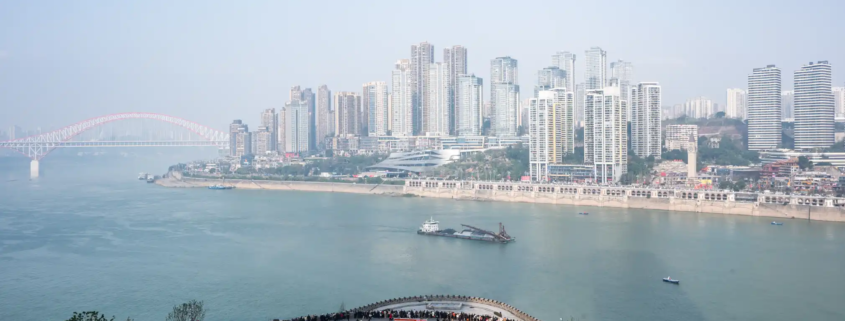Chongqing: The World’s Largest City
Chongqing, a sprawling megacity in central China, boasts a population of approximately 34 million, yet it often remains overshadowed by Beijing and Shanghai. This vibrant metropolis stands as a testament to China’s rapid urbanisation and its ability to reshape landscapes. Over the past three decades, the Chinese government’s initiative to unify vast rural areas has transformed Chongqing into a symbol of the planet’s fastest urban revolution, as highlighted in a recent photo gallery by The Guardian.
Nestled at the confluence of the Yangtze and Jialing Rivers, Chongqing’s unique geography of steep hills and lush valleys has given rise to a futuristic cityscape. Its skyline, a blend of modern skyscrapers and ancient monuments, is a visual spectacle. The city’s metro system, with 12 lines and 561 kilometers of track, carries over a billion passengers annually, famously passing through residential buildings, such as at Liziba station, where trains traverse the eighth floor of an apartment block.
Chongqing’s economic ascent is equally remarkable. In just 20 years, its GDP per capita has surged 16-fold, transitioning from heavy industry to a hub for automotive and IT production. The city manufactures one in three laptops and one in ten motorbikes sold globally. Architectural marvels like the Eling Palace complex and the 20-meter-high Sisyphe bookshop within The Ring shopping center reflect its blend of innovation and tradition.
Despite its scale, Chongqing remains affordable, with housing costs a fraction of those in Beijing or Shanghai. Cultural landmarks, such as the Buddhist Luohan temple, dating back to the Song dynasty, and the UNESCO-listed Dazu Rock Carvings, add historical depth. From cable cars offering panoramic views to luxury Yangtze River cruises, Chongqing captivates visitors with its dynamic energy and multi-dimensional urban experience, redefining what a city can be.



